- Home
- Resources
- Work samples
- Samples
- Investigation: Networks - AT
Digital Technologies
Years 7 and 8
Satisfactory
Investigation: Networks

 1
Annotation 1
1
Annotation 1
Distinguishes each type of network based on the physical aspects of their communication media
-
Annotations
-
1
Annotation 1
Distinguishes each type of network based on the physical aspects of their communication media
 1
Annotation 1
1
Annotation 1
Identifies correctly the most common type of local area network (LAN), and the technology and devices present
-
Annotations
-
1
Annotation 1
Identifies correctly the most common type of local area network (LAN), and the technology and devices present
 1
Annotation 1
1
Annotation 1
Identifies correctly different LAN network topologies
-
Annotations
-
1
Annotation 1
Identifies correctly different LAN network topologies
 1
Annotation 1
1
Annotation 1
Describes the relationship between typical wireless and wired LAN, including technology used
-
Annotations
-
1
Annotation 1
Describes the relationship between typical wireless and wired LAN, including technology used
 1
Annotation 1
1
Annotation 1
Explains the factors affecting the performance of each type of network
-
Annotations
-
1
Annotation 1
Explains the factors affecting the performance of each type of network
 1
Annotation 1
1
Annotation 1
States the importance of an IP address and the protocol used on the internet
-
Annotations
-
1
Annotation 1
States the importance of an IP address and the protocol used on the internet

 1
Annotation 1
1
Annotation 1
Draws a diagram to show how devices connect in the infrastructure described in the given situation (a typical home wireless local area network layout)
-
Annotations
-
1
Annotation 1
Draws a diagram to show how devices connect in the infrastructure described in the given situation (a typical home wireless local area network layout)
Above satisfactory
Investigation: Networks

 1
Annotation 1
1
Annotation 1
Defines and classifies the types of networks 2 Annotation 2
Summarises concisely some of the technologies used in a network
-
Annotations
-
1
Annotation 1
Defines and classifies the types of networks -
2
Annotation 2
Summarises concisely some of the technologies used in a network
 1
Annotation 1
1
Annotation 1
Defines a network and states its purpose
-
Annotations
-
1
Annotation 1
Defines a network and states its purpose
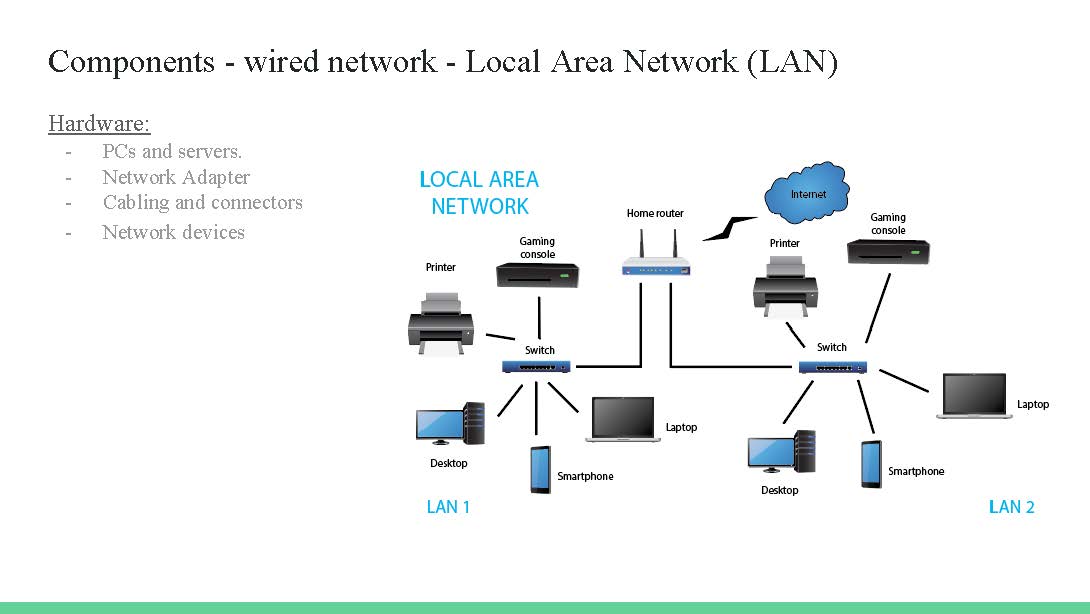 1
Annotation 1
1
Annotation 1
Provides a diagram of a network including the types of devices connected to a network and how they might be linked to other devices in a typical local area network (LAN)
-
Annotations
-
1
Annotation 1
Provides a diagram of a network including the types of devices connected to a network and how they might be linked to other devices in a typical local area network (LAN)
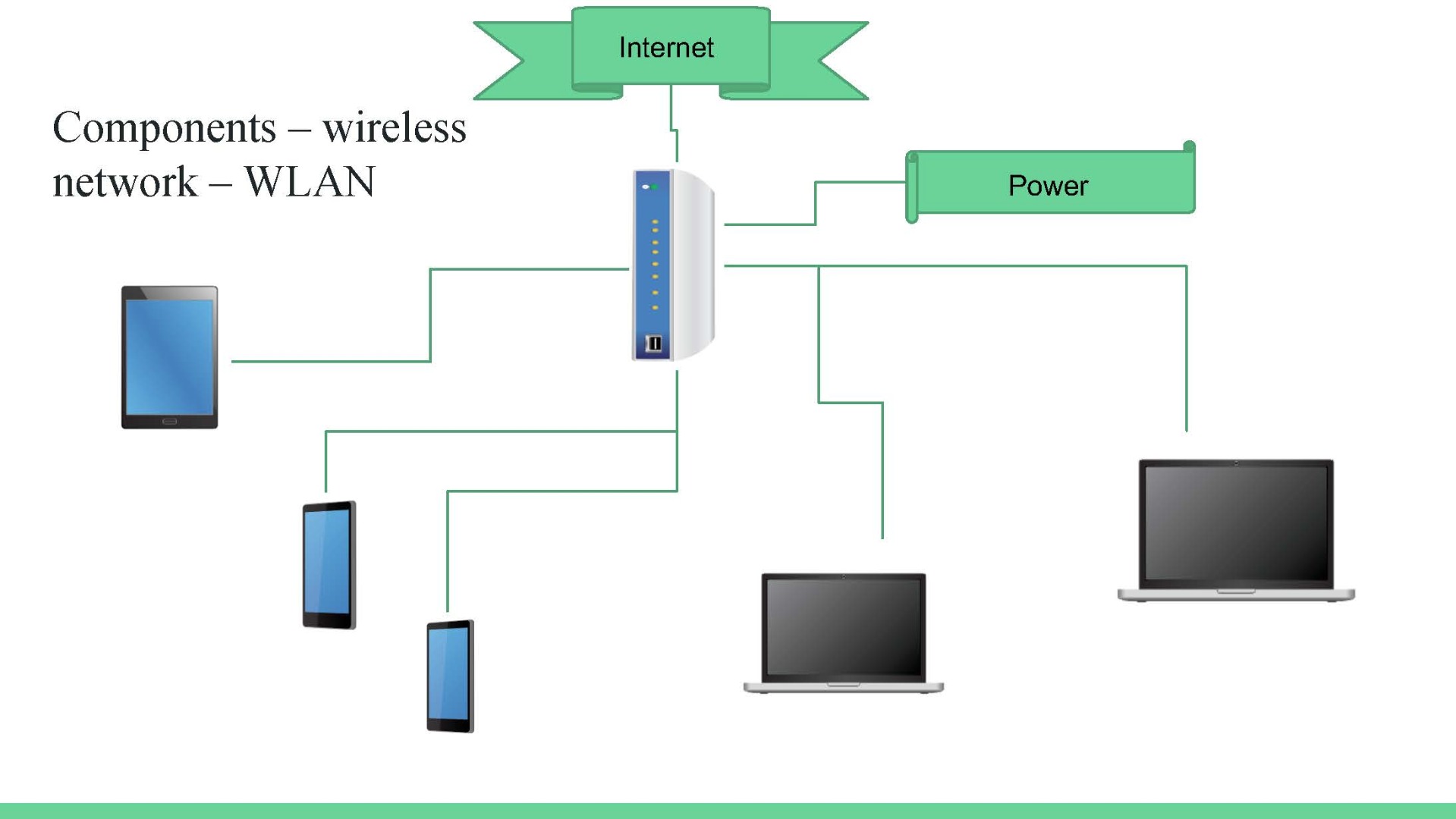 1
Annotation 1
1
Annotation 1
Provides a diagram that illustrates how devices (tablet, laptop) use wireless communication and connect to a wireless router
-
Annotations
-
1
Annotation 1
Provides a diagram that illustrates how devices (tablet, laptop) use wireless communication and connect to a wireless router
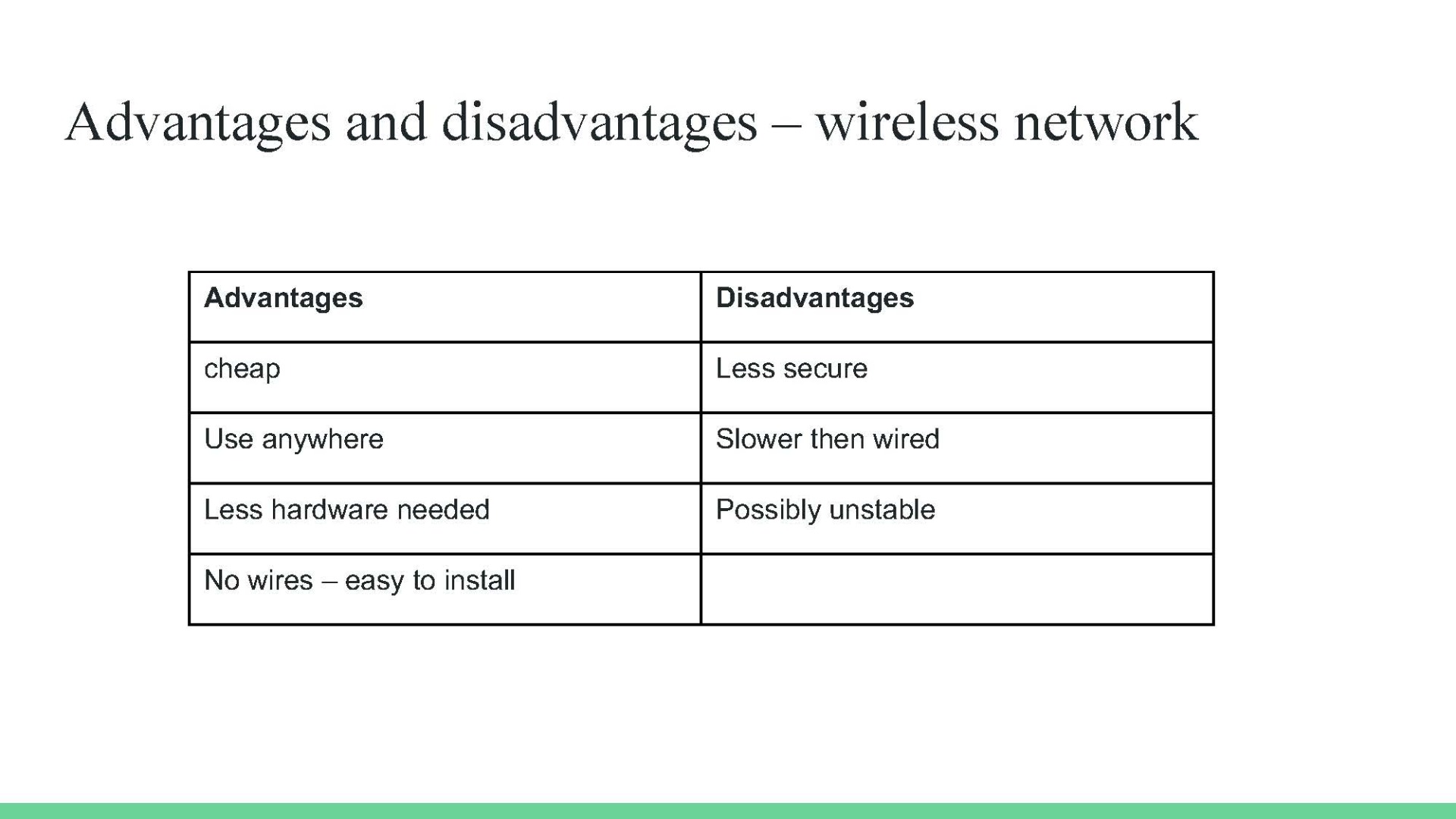 1
Annotation 1
1
Annotation 1
Summarises the key advantages and disadvantages of wireless local area networks (WLANs)
-
Annotations
-
1
Annotation 1
Summarises the key advantages and disadvantages of wireless local area networks (WLANs)
 1
Annotation 1
1
Annotation 1
Provides a diagram that illustrates a simplified version of the structure of a mobile network
-
Annotations
-
1
Annotation 1
Provides a diagram that illustrates a simplified version of the structure of a mobile network
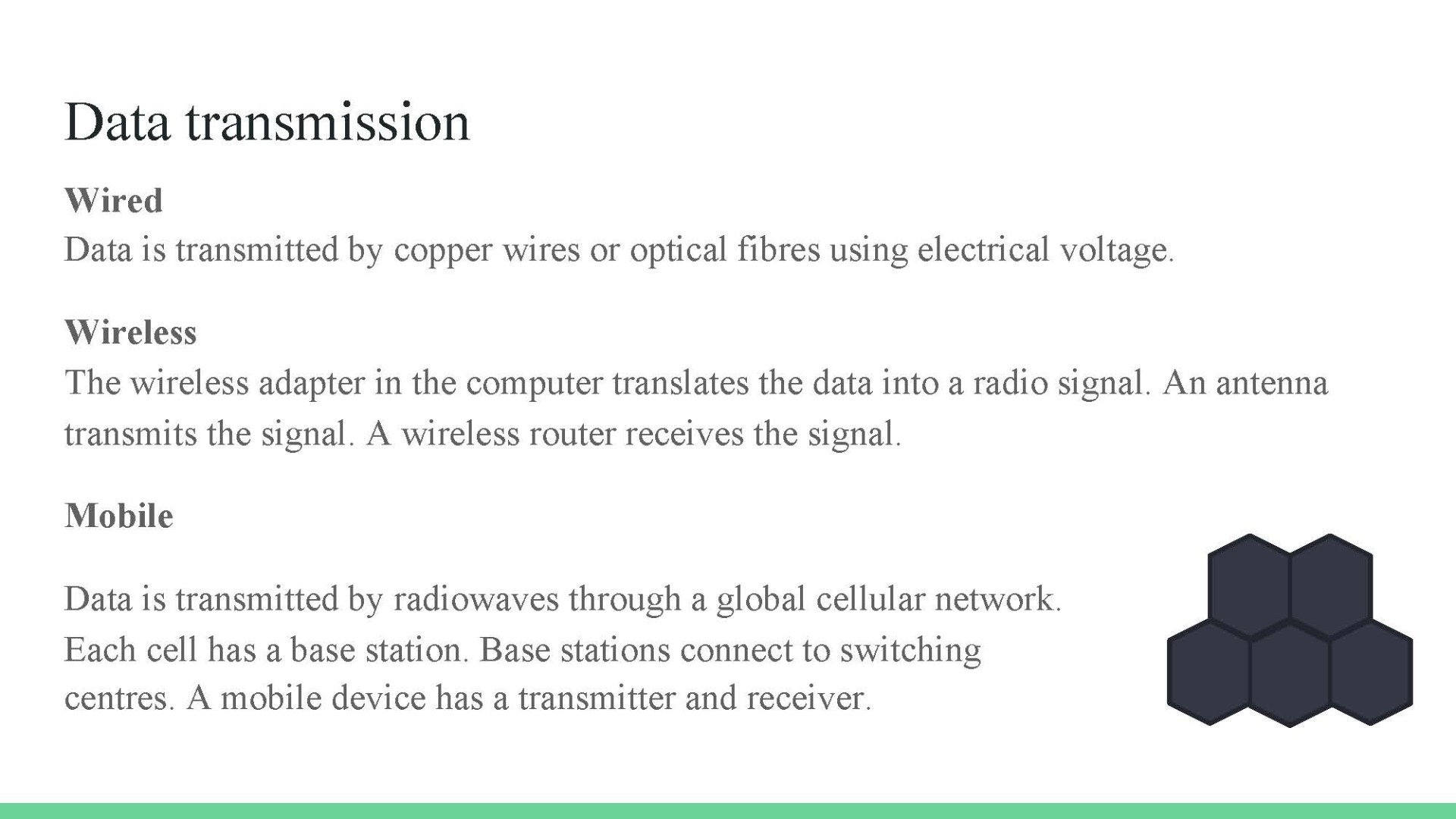 1
Annotation 1
1
Annotation 1
Summarises correctly the key differences between how data are transmitted on each type of network
-
Annotations
-
1
Annotation 1
Summarises correctly the key differences between how data are transmitted on each type of network
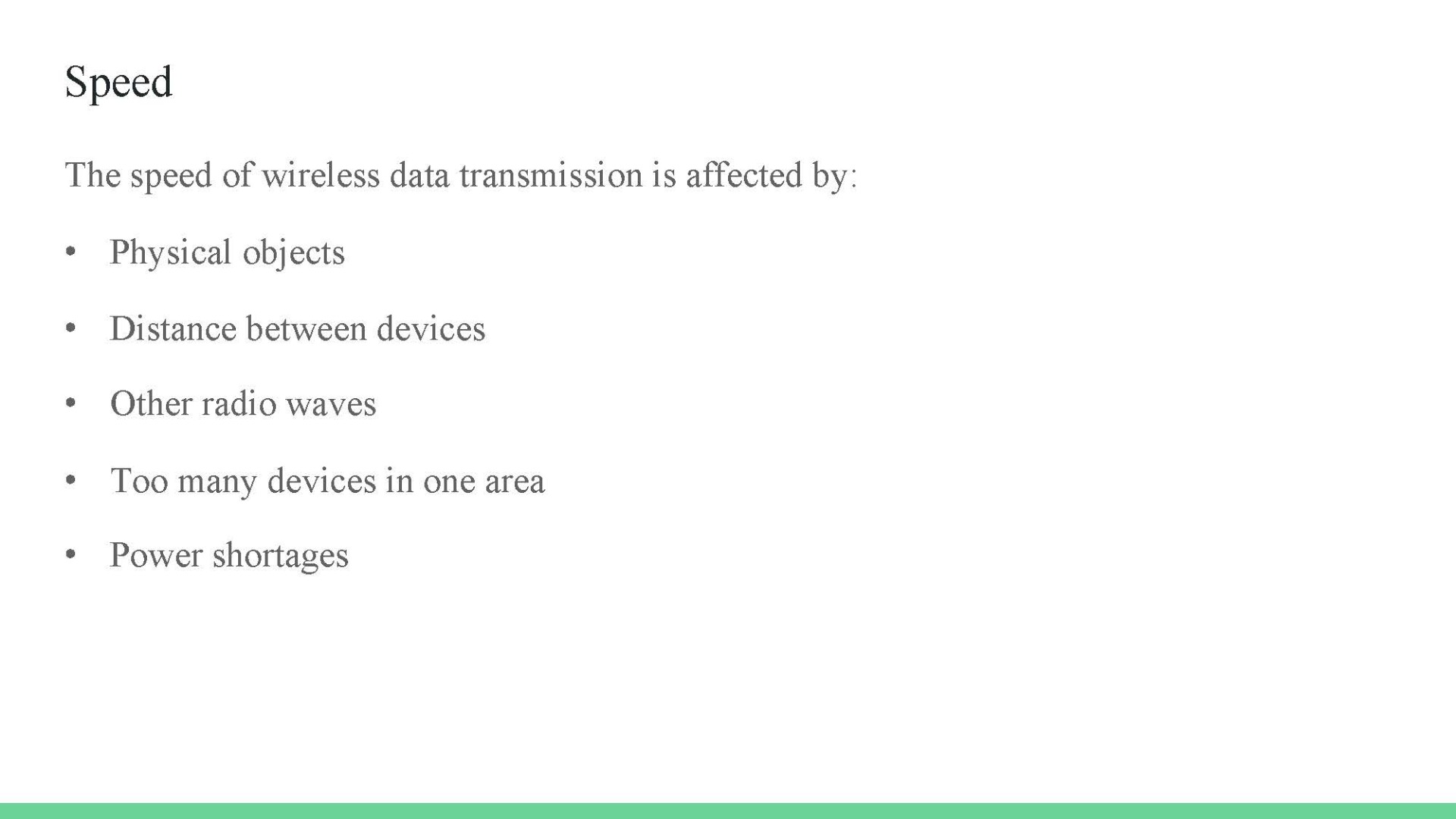 1
Annotation 1
1
Annotation 1
States the factors that can impact the effectiveness of wireless transmission
-
Annotations
-
1
Annotation 1
States the factors that can impact the effectiveness of wireless transmission
 1
Annotation 1
1
Annotation 1
States correctly the role of transmission control protocol/internet protocol (TCP/IP) on the internet, and provides some examples of the functions it serves
-
Annotations
-
1
Annotation 1
States correctly the role of transmission control protocol/internet protocol (TCP/IP) on the internet, and provides some examples of the functions it serves
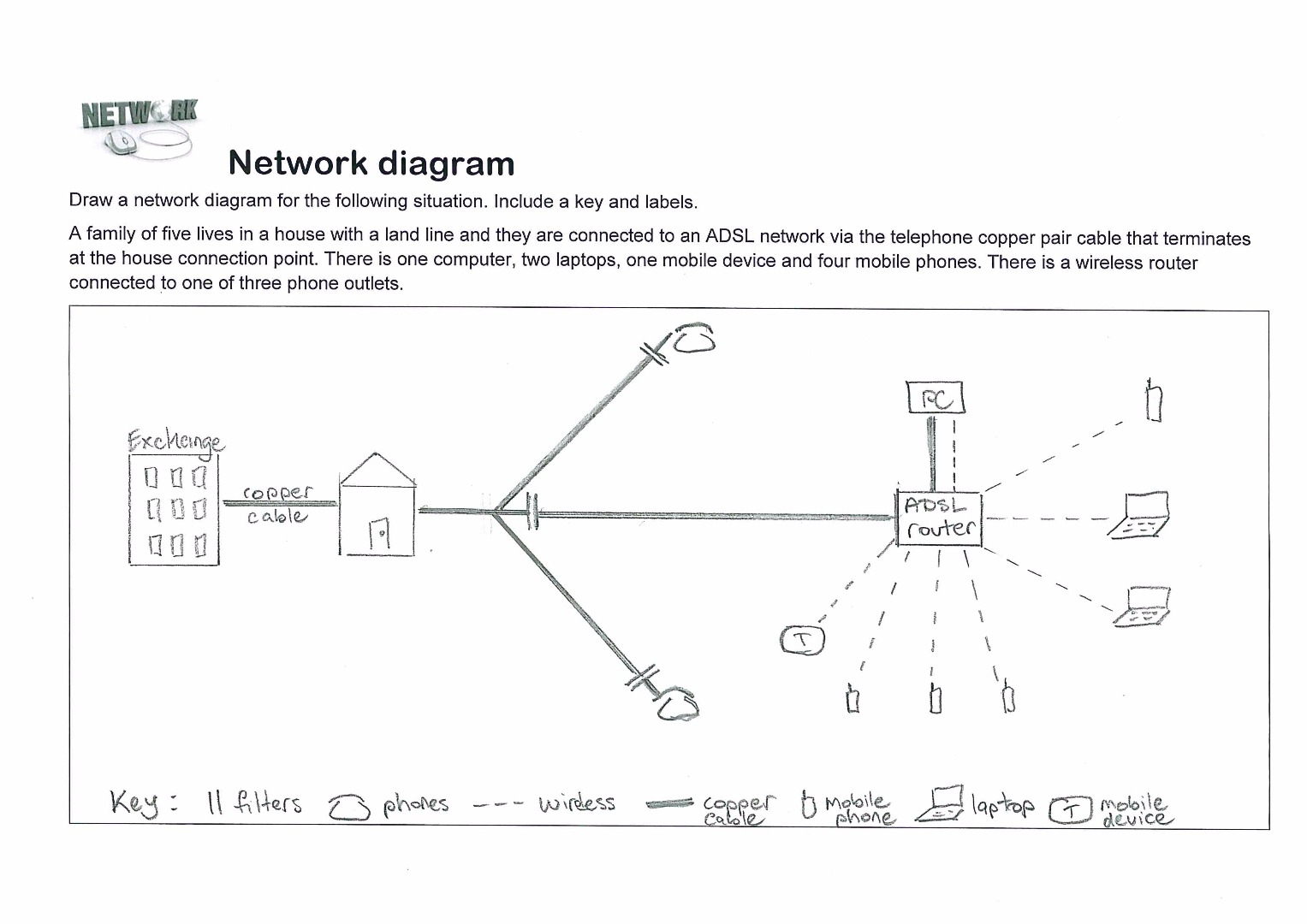 1
Annotation 1
1
Annotation 1
Draws a diagram including complete detail of all connections and hardware, and their locations in the infrastructure described in the given situation (a typical home wireless local area network layout) 2 Annotation 2
Distinguishes clearly between wireless, wired, and copper (telephone network) connections
-
Annotations
-
1
Annotation 1
Draws a diagram including complete detail of all connections and hardware, and their locations in the infrastructure described in the given situation (a typical home wireless local area network layout) -
2
Annotation 2
Distinguishes clearly between wireless, wired, and copper (telephone network) connections
Below satisfactory
Investigation: Networks

 1
Annotation 1
1
Annotation 1
Describes a local area network (LAN) correctly, including types of technologies 2 Annotation 2
Provides a diagram not typical of a LAN topology
-
Annotations
-
1
Annotation 1
Describes a local area network (LAN) correctly, including types of technologies -
2
Annotation 2
Provides a diagram not typical of a LAN topology
 1
Annotation 1
1
Annotation 1
Describes a wide area network (WAN), including the common technologies used and the role of internet service providers (ISPs) 2 Annotation 2
Provides a diagram that illustrates multiple networks linked together, although not in the way that a WAN would actually connect
-
Annotations
-
1
Annotation 1
Describes a wide area network (WAN), including the common technologies used and the role of internet service providers (ISPs) -
2
Annotation 2
Provides a diagram that illustrates multiple networks linked together, although not in the way that a WAN would actually connect
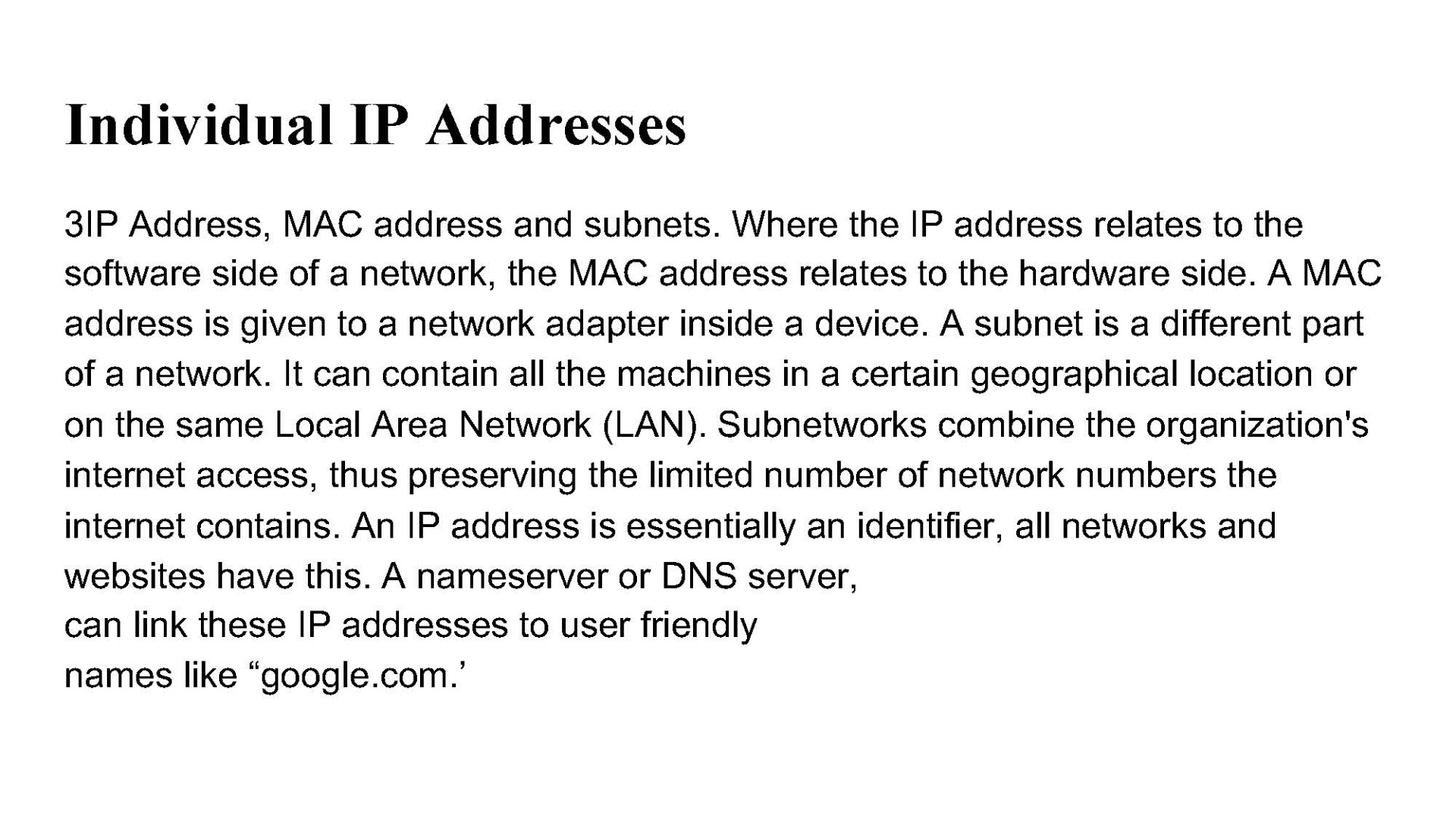 1
Annotation 1
1
Annotation 1
Outlines the technologies used in general terms 2 Annotation 2
States the role of some protocols
-
Annotations
-
1
Annotation 1
Outlines the technologies used in general terms -
2
Annotation 2
States the role of some protocols

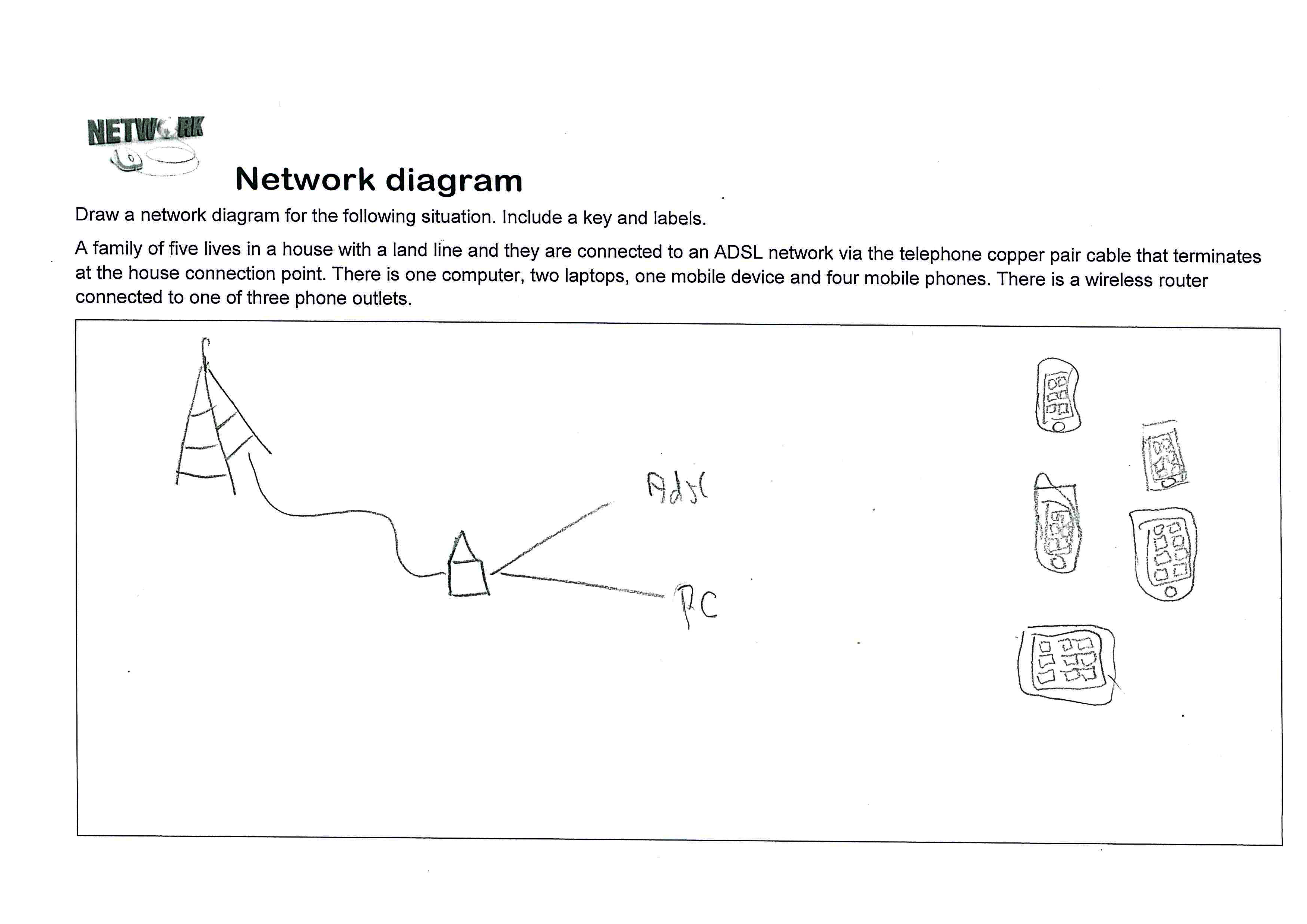 1
Annotation 1
1
Annotation 1
Draws a diagram to show how some devices connect in the infrastructure described in the given situation (a typical home wireless local area network layout)
-
Annotations
-
1
Annotation 1
Draws a diagram to show how some devices connect in the infrastructure described in the given situation (a typical home wireless local area network layout)
Satisfactory
Investigation: Networks

 1
Annotation 1
1
Annotation 1
Distinguishes each type of network based on the physical aspects of their communication media
-
Annotations
-
1
Annotation 1
Distinguishes each type of network based on the physical aspects of their communication media
 1
Annotation 1
1
Annotation 1
Identifies correctly the most common type of local area network (LAN), and the technology and devices present
-
Annotations
-
1
Annotation 1
Identifies correctly the most common type of local area network (LAN), and the technology and devices present
 1
Annotation 1
1
Annotation 1
Identifies correctly different LAN network topologies
-
Annotations
-
1
Annotation 1
Identifies correctly different LAN network topologies
 1
Annotation 1
1
Annotation 1
Describes the relationship between typical wireless and wired LAN, including technology used
-
Annotations
-
1
Annotation 1
Describes the relationship between typical wireless and wired LAN, including technology used
 1
Annotation 1
1
Annotation 1
Explains the factors affecting the performance of each type of network
-
Annotations
-
1
Annotation 1
Explains the factors affecting the performance of each type of network
 1
Annotation 1
1
Annotation 1
States the importance of an IP address and the protocol used on the internet
-
Annotations
-
1
Annotation 1
States the importance of an IP address and the protocol used on the internet

 1
Annotation 1
1
Annotation 1
Draws a diagram to show how devices connect in the infrastructure described in the given situation (a typical home wireless local area network layout)
-
Annotations
-
1
Annotation 1
Draws a diagram to show how devices connect in the infrastructure described in the given situation (a typical home wireless local area network layout)